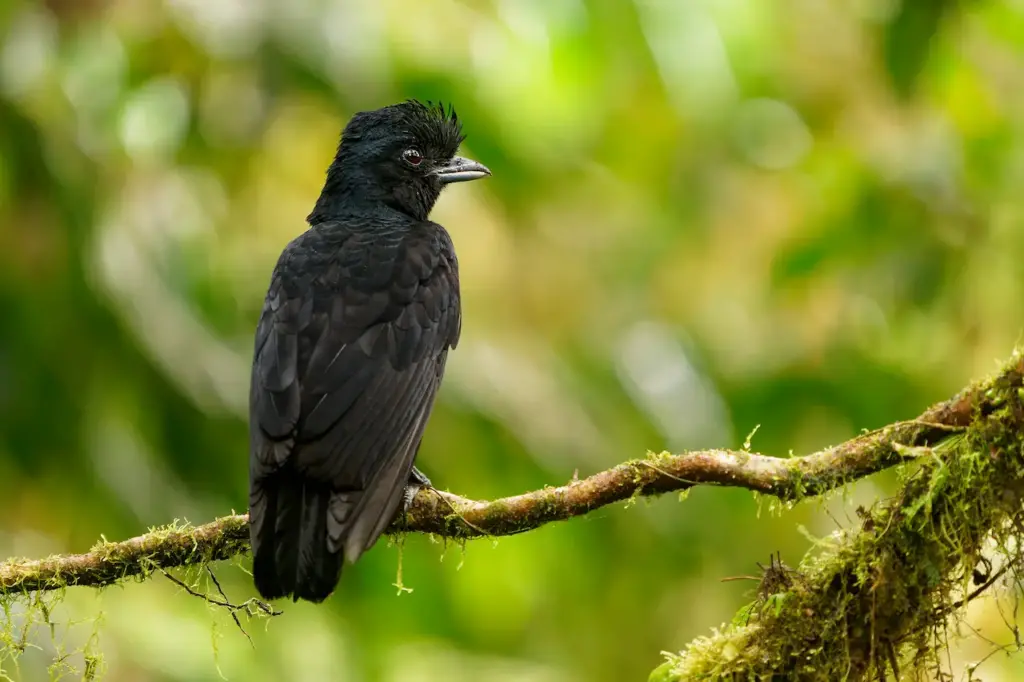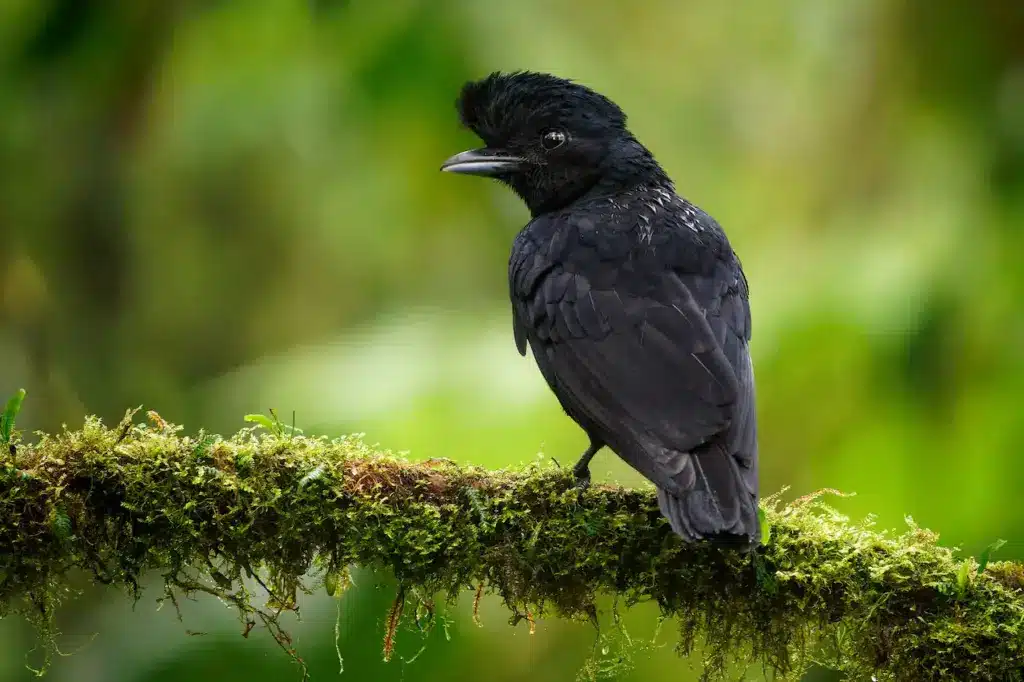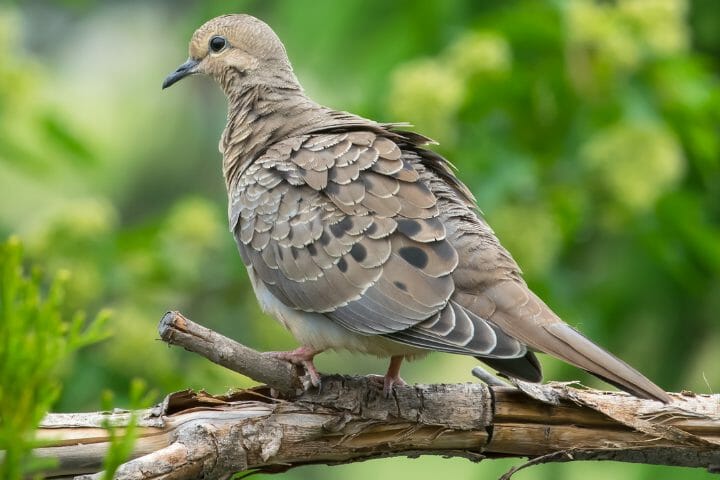The Long-wattled Umbrellabirds (Cephalopterus penduliger) got its name from the long wattle that the male carries, which is about 35 cm long and covered in short, scaly feathers. The females, by contrast, not only do not have a wattle, but are only about half the size of the males, and resemble crows.

Description
Long-wattled Umbrellabirds have sharp and powerful claws to secure a good grip on branches during calling. This group comprises the largest of the cotingas, being about the size of a crow. As is the case with most cotingas, the females are smaller and less dramatic than the males in terms of ornamentation. The males are entirely black.
Distribution / Habitat
The Long-wattled Umbrellabird (Cephalopterus penduliger) is found on the Pacific slope from southwestern Colombia through Ecuador. They are found in the foothills between 460 and 5,900 ft (140–1,800 m).
It migrates up and down the mountains.
It is at risk due to habitat destruction, and its conspicuous size and appearance make it easy to hunt. Furthermore, only a few of the populations live within protected areas, so the bird is now considered vulnerable.
The species do not fly well and instead walk around in the canopy. Their nest was first seen by scientists in 2003. In breeding season, the males shout a loud call.

Habitat
Umbrellabirds usually inhabit the mid-level to upper story of tall trees.
Behavior
This species may be an altitudinal migrant, but there are both highland and lowland populations known to be sedentary. The call is a plaintive combination between a “roar” and a bleating calf, often occurring in the morning or afternoon. Males may displace other males from calling perches. Umbrellabirds have a very characteristic slow-flapping during flight with the crest lying down flat. Once perched they will often hop clumsily from branch to branch. Animal prey is often beaten against a tree branch before swallowing.
Diet
Their diet consists of insects and fruits, such as berries palm fruits, and nuts. Larger seeds of the fruits they consume are regurgitated. This helps regenerate the tropical forests they live in, as seeds of their preferred food plants are dispersed throughout the forests. Insects, larvae, and some spiders are taken as well. Animal matter is consumed especially during the rainy season when fruits are more scarce.
Breeding / Nesting
The nest is platform-type and is often located high in a tree fork. It consists of loose twigs — such that the single egg or chick can be seen from underneath. The nest

Other Common Names:
English: Bullbird; French: Coracine casquée; German: Langlappen-Schirmvogel; Spanish: Pájaro Paraguas Caranculado.
Please Note: The articles or images on this page are the sole property of the authors or photographers. Please contact them directly with respect to any copyright or licensing questions. Thank you.





